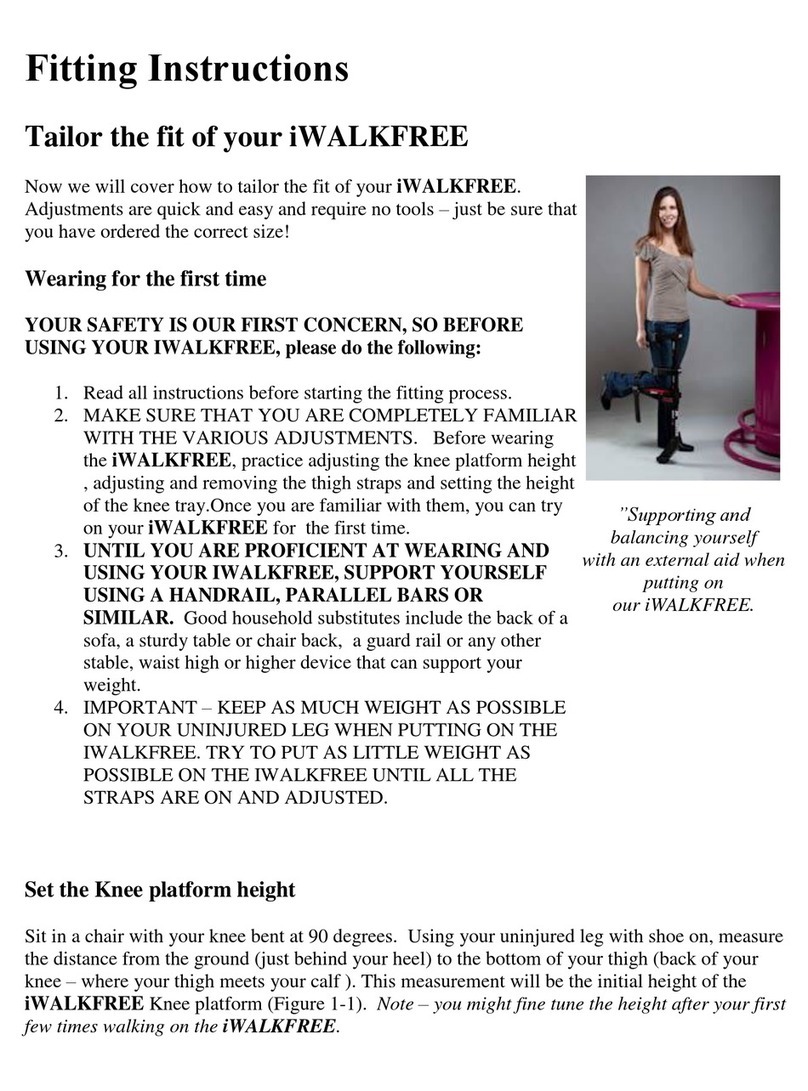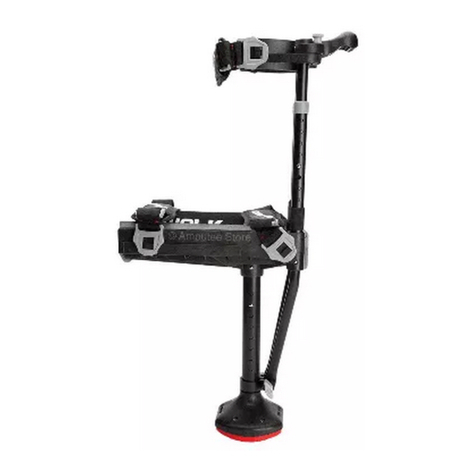Before you start! Is iWALK 2.0 right for you?
Physical Abilities Requirements
Other Requirements
Sizing Limitations Age Limits
• If you cannot perform both of these tests, then iWALK2.0 is not going to
work for you. Please contact us for a return authorization number.
• If youcanperformboth,thencontinuereviewing theremaining requirements.
1. Stair Test
Before your injury, could you uidly walk up and down stairs at
normal speed, without using the hand rail?
• You commit to reading and following all of the instructions in this
manual or in our video tutorials at
www.iwalk-free.com/help
• You're willing to allow 5-20 minutes to allow your body to learn and
adapt to using the iWALK2.0
• Height - You are between 4'10" and 6'6", however, leg length
proportions vary considerably, so if you are under 5'1" and above
6'1" consult our sizing chart on page 3
• You weigh 275lbs (125kg) or less
• Your thigh circumference at the top of your leg is 28" (71cm) or less
2. Balance Test
Can you balance on one foot for at least 30 seconds?
• Before your injury, you could walk normally without assistive devices
• Your injury is below the knee and your uninjured leg is fully functional
• You can bend your injured leg 90 degrees at the knee
If you're over 55, pay careful attention - iWALK2.0 might not work for you.
Physical ability is more important than how old you are. And it varies from
person to person, especially as we age.
So regardless of your age, if you do not meet ALL the requirements listed above,
then iWALK2.0 isn't going to work for you.
If you meet the requirements listed above, iWALK2.0 will work for you.
More details on qualications can be found at http://www.iwalk-free.com/hands-free-crutches/how-to-use/





























